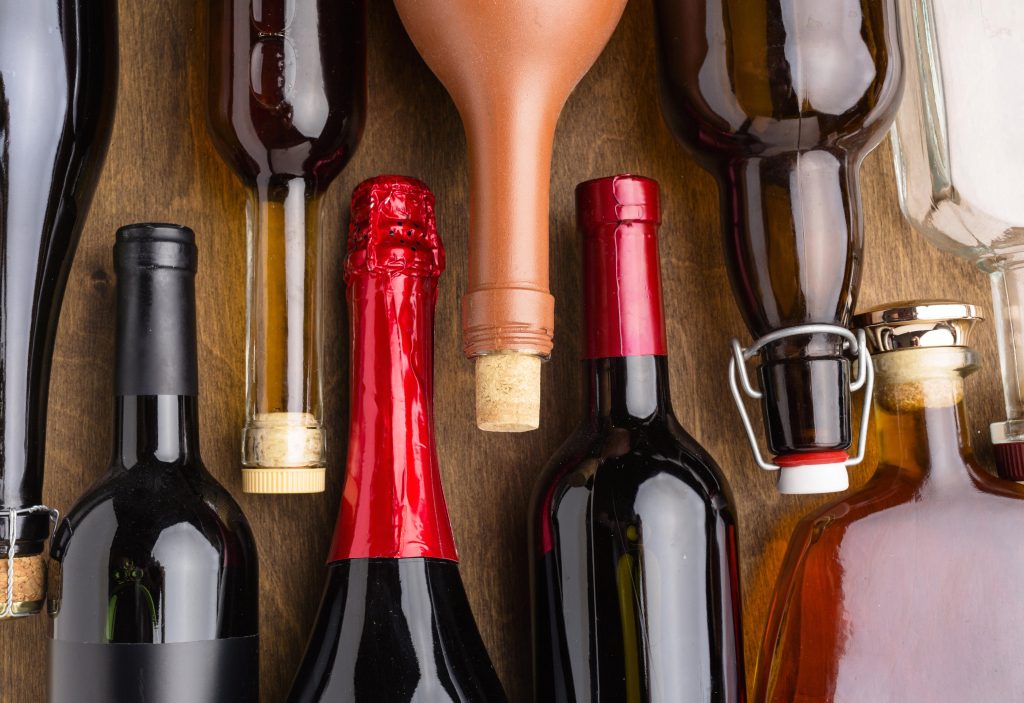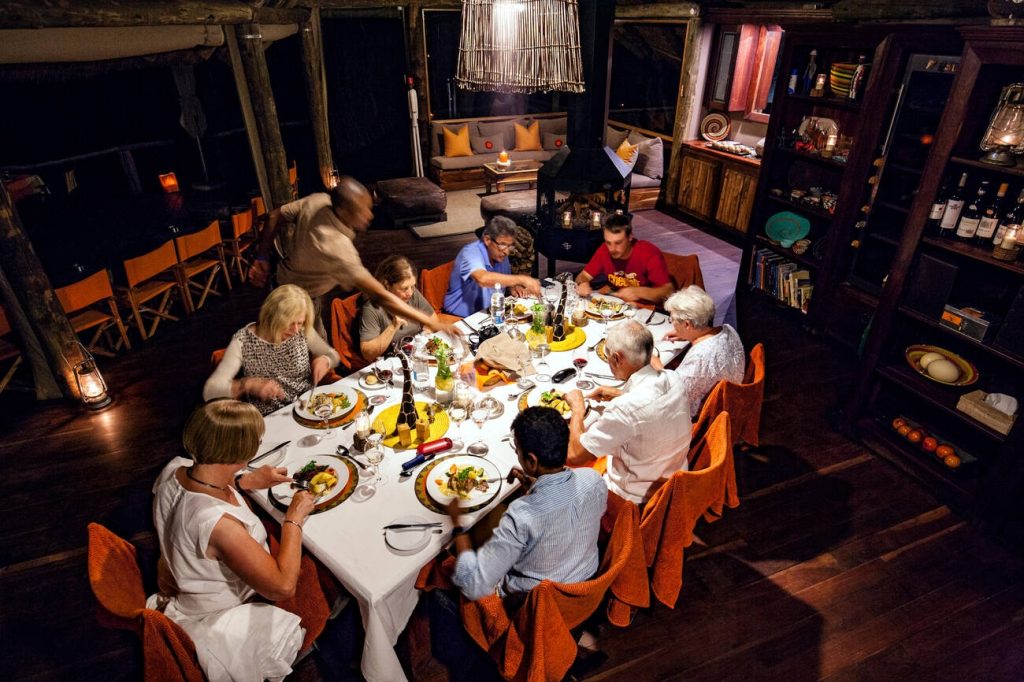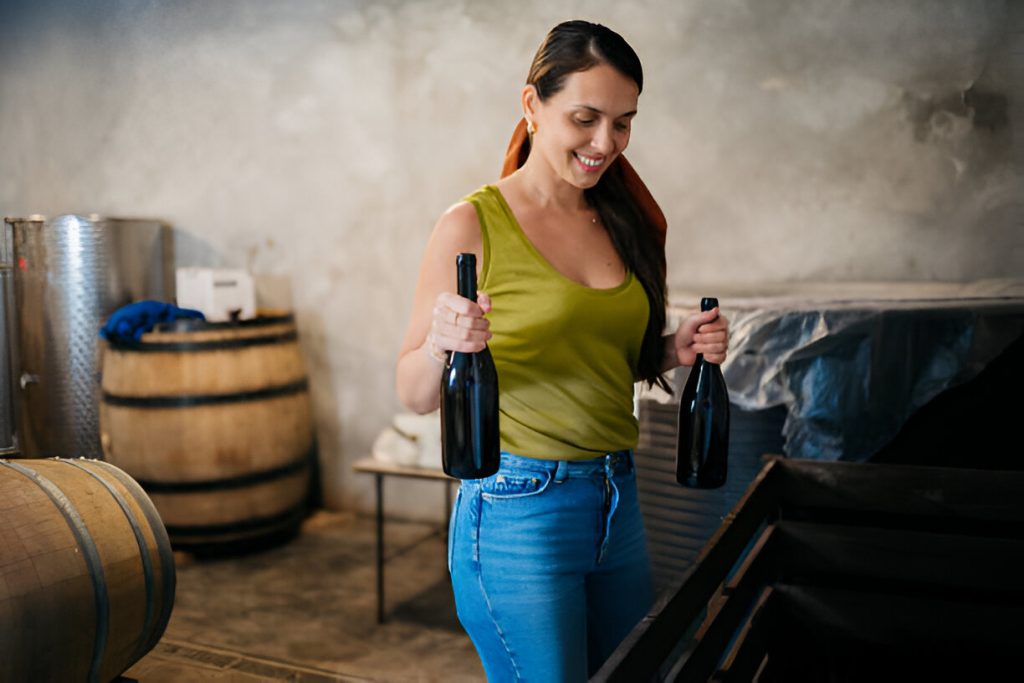Are you ready to embark on a journey of exploration into the world of Spanish red wines? Get ready to savor the rich flavors and discover the unique characteristics of the different varieties from Spain. In this article, we will compare the diverse red wines that Spain has to offer, highlighting their regional origins and distinct profiles. From the youthful and value-driven Tempranillo to the bold and complex Garnacha blends, there is a Spanish red wine to suit every taste. Join us as we delve into renowned regions like Rioja and Ribera del Duero, and uncover the beauty and diversity of Spanish red wines. Get ready to elevate your wine experience and discover why these wines are cherished by enthusiasts worldwide.
Contents
- Young Tempranillo
- Aged Tempranillo
- Young Garnacha
- High-End Garnacha and Blends
- Monastrell
- Mencía
- Bobal
- Spanish Denominación De Origen Classification System
- Key Spanish Wine Terms – Wines With Geographical Origen
- Indicación Geografica Protegida/Protected Geographical Indication (PGI)
- Vino De La Tierra (Vt)
- Vino/Wine
Young Tempranillo
If you’re looking for a value-driven and lighter-bodied red wine, you can’t go wrong with a young Tempranillo from Spain. Tempranillo is the most widely planted red grape variety in the country and offers a delightful range of flavors and characteristics. When comparing flavor profiles, you’ll find that young Tempranillos exhibit notes of sour cherry, plum, spicy black pepper, and bay leaf, creating a vibrant and enticing palate. With less than a year of aging, these wines maintain their freshness and showcase the true essence of the grape.
One of the advantages of young Tempranillo is its affordability, with an average cost ranging between $10-20. This makes it an excellent choice for those seeking quality without breaking the bank. Additionally, Tempranillo is produced in various regions across Spain, including Rioja Crianza, Ribera del Duero Roble and Crianza, Valdepeñas, Tinto de Toro, La Mancha, Castilla-León, and Extremadura. Each region adds its own touch to the wine, resulting in slight regional variations that can be explored and appreciated.
In terms of food pairings, young Tempranillo is versatile and pairs well with a variety of dishes. Its lighter-bodied nature makes it an excellent match for roasted poultry, grilled vegetables, and even seafood. The acidity and spice in the wine complement these flavors and enhance the overall dining experience.
Aged Tempranillo
Now let’s delve into the world of aged Tempranillo, and see how this remarkable red wine variety evolves with time. The aging process of Tempranillo is a journey that transforms its flavors and textures, resulting in a complex and captivating wine. Here are some key aspects to consider:
- Aging potential: Aged Tempranillo has the ability to age gracefully, developing more nuanced flavors and a smoother mouthfeel over time. It can be enjoyed young, but its true character shines when given the opportunity to mature.
- Flavor profiles: As Tempranillo ages, its flavor profile evolves. The vibrant red fruit notes of cherry and dried fig give way to deeper, more complex flavors of vanilla and cedar. This transformation creates a multi-layered wine that tantalizes the senses.
- Oak aging vs bottle aging: Aged Tempranillo can be achieved through both oak aging and bottle aging. Oak aging imparts additional flavors of spice and toastiness, while bottle aging allows the wine to develop and integrate its flavors naturally, resulting in a more elegant and refined final product.
When it comes to food pairings, aged Tempranillo is incredibly versatile. Its depth of flavor and balanced acidity make it a perfect match for a wide range of dishes. Consider pairing it with roasted lamb, aged cheeses, or even hearty stews. The aging process of Tempranillo truly enhances its ability to complement and elevate a variety of culinary experiences.
Young Garnacha
When exploring the different red wine varieties from Spain, one cannot overlook the vibrant and refreshing character of young Garnacha. Young Garnacha wines are known for their enticing flavor profile that includes notes of strawberry, ruby red grapefruit, hibiscus, and black tea. These wines have a fresh and juicy style, with sweet red fruit flavors that make them ideal for enjoying on a warm summer day. Young Garnacha wines are also popular for making Sangria, as their fruity and aromatic qualities lend themselves well to this classic Spanish cocktail.
In terms of pairing suggestions, young Garnacha wines pair excellently with a variety of dishes. Their bright acidity and fruity flavors make them a great match for grilled vegetables, roasted chicken, or even spicy tapas like chorizo or patatas bravas. Additionally, the light tannins and refreshing nature of young Garnacha wines make them a perfect pairing for tomato-based dishes, such as pasta with marinara sauce or margherita pizza.
Emerging regions for young Garnacha production include Calatayud, Somontano, Navarra, Cariñena, and Campo de Borja. These regions are producing exceptional young Garnacha wines that showcase the unique terroir and grape characteristics of each area.
While young Garnacha wines are meant to be enjoyed in their youth, they do have some aging potential. Although they may not develop the same complexity and depth as aged Garnacha wines, young Garnacha can still benefit from a couple of years of bottle aging, allowing the flavors to integrate and soften.
The key difference between young Garnacha and aged Garnacha wines lies in their flavor profile and structure. Young Garnacha wines are all about freshness and fruitiness, while aged Garnacha wines develop more complex flavors of grilled plum, red licorice, juniper, and crushed gravel. Aged Garnacha wines also tend to have higher tannins and a longer finish.
High-End Garnacha and Blends
Exploring high-end Garnacha and blends will provide you with a taste of the bold and complex wines that Spain has to offer. These wines are known for their distinct flavor profiles, aging process, and regional variations. Here are some key points to consider:
- Flavor profiles of high-end Garnacha blends: These wines offer a unique combination of flavors, including grilled plum, red licorice, juniper, and crushed gravel. The dark raspberry flavors add depth and complexity to the wine, making it a truly indulgent experience.
- Aging process and oak influence in high-end Garnacha wines: High-end Garnacha wines are aged longer, allowing them to develop rich and smooth tannins. The influence of oak barrels adds layers of vanilla and cedar, enhancing the wine’s complexity and adding a touch of elegance.
- Comparison of high-end Garnacha wines from different Spanish regions: Each Spanish region has its own expression of Garnacha, showcasing the diversity of this grape. From Vinos de Madrid to Priorat, each region offers its own unique flavor profile and style, making it an exciting journey to explore.
- Food pairings for high-end Garnacha and blend wines: These bold and complex wines pair well with equally rich and robust dishes. Try pairing them with grilled meats, hearty stews, or aged cheeses to bring out the best flavors in both the wine and the food.
- The influence of old vines on the quality of high-end Garnacha wines: Old vines, with their deep roots and low yield, contribute to the exceptional quality of high-end Garnacha wines. These vines produce grapes with concentrated flavors and complexity, resulting in wines that are truly exceptional.
Monastrell
Monastrell wines offer a bold and intense flavor profile, making them a standout choice among the different red wine varieties from Spain. With its high tannin and black plum flavors, Monastrell is known for producing deeply pigmented red wines that are rich and full-bodied. These wines have an excellent aging potential, developing complexity and smoothness over time. Monastrell can be paired with a variety of foods, including grilled meats, hearty stews, and aged cheeses.
When comparing Monastrell to Syrah, both varietals share similar characteristics such as high tannins and dark fruit flavors. However, Monastrell tends to have a more robust and earthy profile, while Syrah offers a spicier and more peppery note.
Monastrell is often used as a blending grape, adding structure and depth to other red wine blends. It is commonly blended with Grenache and Carignan to create balanced and complex wines.
While Monastrell is primarily grown in the regions of Jumilla, Alicante, and Valencia, it can also be found in other wine regions such as Bullas, La Mancha, and Yecla. These regions showcase the versatility and adaptability of this grape, highlighting its ability to thrive in different terroirs.
In summary, Monastrell wines are a fantastic choice for those seeking bold and intense red wines. With their aging potential, versatility in blends, and presence in various wine regions, Monastrell wines offer a unique and enjoyable experience for wine enthusiasts.
| Monastrell Features | Description |
|---|---|
| Food Pairings | Grilled meats, hearty stews, aged cheeses |
| Aging Potential | Excellent aging potential, develops complexity and smoothness over time |
| Monastrell vs. Syrah | Monastrell offers a more robust and earthy profile, while Syrah is spicier and more peppery |
| Monastrell Blends | Commonly blended with Grenache and Carignan for balanced and complex wines |
| Monastrell in Other Wine Regions | Grown in regions such as Bullas, La Mancha, and Yecla |
Mencía
To delve into the distinctive characteristics of Mencía, a red wine variety from Spain, let’s explore its unique medium-bodied profile and captivating layers of red fruit and floral aromas. Mencía wines offer a delightful balance of flavors and textures, making them a versatile choice for various food pairings. Whether you’re enjoying a grilled steak or a plate of charcuterie, Mencía’s bright acidity and moderate tannins complement a wide range of dishes.
When it comes to aging potential, Mencía wines can develop beautifully over time. With proper cellaring, these wines can evolve, revealing additional complexity and depth. The terroir influence plays a significant role in shaping the character of Mencía wines. Grown primarily in the regions of Bierzo, Ribeira Sacra, Monterrei, and Valdeorras, Mencía reflects the unique soil composition and climate of each area, resulting in nuanced expressions of the grape.
Some of the best producers of Mencía wines include Dominio de Tares, Descendientes de J. Palacios, and Adega Guímaro. These producers demonstrate exceptional craftsmanship and a deep understanding of the grape, consistently delivering wines of outstanding quality.
In terms of wine styles, Mencía can range from vibrant and fruit-forward to more structured and complex. Whether you prefer a youthful and lively Mencía or a mature and elegant one, there is a style to suit every palate. With its captivating aromas, medium-bodied profile, and ability to age gracefully, Mencía is truly a gem in the world of Spanish red wines.
Bobal
When it comes to Spanish red wine varieties, one that stands out is Bobal. This grape is known for its deep purple color and high tannins, making it a bold and flavorful choice. Bobal is grown in the wine regions of Utiel-Requena and Manchuela, both located in the eastern part of Spain. The winemaking techniques used for Bobal vary, but they often involve maceration and fermentation on the skins to extract the rich color and tannins.
In terms of aging and classification, Bobal wines can be found in different styles. Some are aged in oak barrels, which adds complexity and depth to the wine. These aged Bobal wines can be classified as Crianza, Reserva, or Gran Reserva, depending on the length of aging. On the other hand, there are also young and fresh Bobal wines that are released without any oak aging, known as Joven wines. These wines showcase the vibrant fruit flavors and lively acidity of the grape.
Bobal wines exhibit typical characteristics of Spanish red wines. They often have aromas and flavors of black cherry, dried green herbs, violet, and cocoa powder. The high tannins provide structure and grip, while the deep purple color adds to the visual appeal of the wine. Bobal is a versatile grape that can produce smooth reds with blueberry notes or more robust and intense wines with black fruit flavors.
Spanish Denominación De Origen Classification System
Let’s delve into the Spanish Denominación de Origen Classification System, which categorizes red wine varieties based on geographical boundaries and quality levels. This system, established by Spanish wine regulations, ensures that consumers have a clear understanding of the origin and quality of the wines they purchase. Here are three key aspects of the Spanish DO Classification:
- PDO vs PGI: The Denominación de Origen Protegida/Protected Designation of Origin (PDO) is the highest quality level in the system. It guarantees that the wine has been produced according to strict regulations and originates from a specific region. On the other hand, the Protected Geographical Indication (PGI) indicates a wine’s association with a particular region, but with less stringent requirements.
- Quality Levels in Spanish Wine: The Spanish DO Classification system encompasses various quality levels, including Denominación de Origen Calificada, Vino de Calidad con Indicación Geográfica, Pago, Indicación Geografica Protegida, Vino de la Tierra, and Vino. These levels define the production methods, grape varieties, and aging requirements for each category.
- Spanish Wine Labeling Laws: Spanish wine labeling laws are designed to provide transparency and ensure that consumers can make informed choices. The labels must include information about the wine’s origin, grape variety, and aging status. Terms like Reserva, Crianza, and Gran Reserva indicate the aging period and quality of the wine.
The Spanish Denominación de Origen Classification System plays a crucial role in guaranteeing the quality and authenticity of Spanish red wines. By understanding this system, wine enthusiasts can navigate the diverse Spanish wine regions and make knowledgeable choices when selecting their next bottle.
Key Spanish Wine Terms – Wines With Geographical Origen
Understand the key terms associated with Spanish wines that have a geographical origin. The PDO classification system is used in Spain to classify wines based on their geographical boundaries. Denominación de Origen Protegida (PDO) is the highest level of classification, indicating that the wine is protected and has a specific geographical origin. Denominación de Origen Calificada (DOCa) is a qualified denomination of origin for well-established regions, indicating a high level of quality. Denominación de origen (DO) or denominación de origen protegida (DOP) is a protected denomination of origin, ensuring that the wine comes from a specific region and adheres to certain quality standards. Vino de Calidad con Indicación Geográfica (VC) is a quality wine with a geographical indication, representing a step below PDO. Pago refers to a single estate wine producer outside the boundaries of a formal DO.
In addition to the PDO classification system, Spanish wine terminology includes aging labels. These labels indicate the aging process of the wine. Joven wines are young wines that have not undergone any oak aging. Crianza wines have been aged for a minimum of two years, with at least one year in oak barrels. Reserva wines are higher quality wines aged for a minimum of three years, with at least one year in oak barrels. Gran Reserva wines are top-tier wines aged for a minimum of five years, with at least two years in oak barrels.
When it comes to characteristics, Spanish red wines are known for their rich flavors and aromas. They often list the grape variety on the label, allowing for a better understanding of what to expect from the wine. Different Spanish regions specialize in different grape varieties and wine styles. For example, Rioja is known for its high-quality red wines, Ribera del Duero produces complex and full-bodied reds, and Priorat is famous for powerful and intense wines.
In terms of regions and grape varieties, Spain has a diverse range to offer. Rioja, Ribera del Duero, Priorat, Toro, and Bierzo are just a few of the prominent wine regions in Spain. Tempranillo is the most widely planted red grape variety in Spain, known for its flavors of red fruit and spice. Garnacha is a versatile grape variety that produces fruity and spicy wines with soft tannins. Monastrell, Bobal, and Mencía are other notable grape varieties that contribute to the diverse range of Spanish red wines.
Understanding these key terms and characteristics will help you navigate the world of Spanish wines with ease. Whether you’re looking for a bold and complex Reserva from Rioja or a vibrant and aromatic Mencía from Bierzo, Spain has a wine to suit every palate. Explore the different regions and grape varieties, and indulge in the rich history and cultural significance of Spanish red wines.
Indicación Geografica Protegida/Protected Geographical Indication (PGI)
Curious about the Indicación Geografica Protegida/Protected Geographical Indication (PGI) in Spanish red wines? Here’s what you need to know:
- Protected Geographical Indications in Spain: PGI is a designation that guarantees the origin and quality of Spanish wines. It ensures that the wine is produced in a specific geographical area and follows certain production methods.
- Benefits of PGI for Spanish Wines: PGI provides consumers with assurance regarding the authenticity and quality of the wine. It also helps promote regional diversity and protect traditional winemaking practices.
- Notable PGI Wines from Spain: Some notable PGI wines include PGI Vinos de la Tierra de Castilla, PGI Vinos de la Tierra de Extremadura, and PGI Vinos de la Tierra de la Comunidad Valenciana. These wines offer unique expressions of their respective regions.
- PGI vs. PDO in Spanish Wine: While PDO (Protected Designation of Origin) focuses on stricter regulations and quality control, PGI allows for more flexibility in winemaking practices. Both designations aim to protect the authenticity and quality of Spanish wines.
- PGI and Terroir in Spanish Wines: PGI plays a crucial role in showcasing the influence of terroir on Spanish wines. It highlights the unique characteristics and flavors that result from the specific geographical and climatic conditions of each region.
Vino De La Tierra (Vt)
If you’re exploring Spanish red wines, you’ll come across Vino de la Tierra (VT), a designation that represents regional wines with unique expressions of their respective areas. VT Spanish wines offer a fascinating array of characteristics that set them apart from other wines. Each region showcases its distinct terroir, climate, and grape varieties, resulting in wines that truly reflect their origins.
Notable VT wine regions in Spain include Castilla y León, Extremadura, and La Mancha. These regions have a long history of winemaking and are known for producing high-quality VT red wines.
When comparing VT wines to Denominación de Origen (DO) wines, there are some key differences to consider. VT wines offer more flexibility in terms of vineyard management, grape sourcing, blends, and winemaking styles within a specific geographical area. DO wines, on the other hand, adhere to stricter regulations and represent specific wine regions with established reputations.
Exploring the diversity of VT red wines is a delightful journey. From the rich and bold Tempranillo-based wines of Castilla y León to the elegant and aromatic Garnacha wines of La Mancha, there is something for every palate. VT wines showcase the incredible range of grape varieties and winemaking techniques found throughout Spain.
VT wines are often considered hidden gems in the Spanish wine world. They offer exceptional quality and value, allowing wine enthusiasts to discover unique and distinctive expressions of Spanish terroir. If you’re looking to expand your wine horizons, VT wines are definitely worth exploring.
Vino/Wine
When exploring Spanish red wines, you’ll come across a wide range of Vino de Mesa (table wine) or Vino de Espana (Spanish wine) options that offer a variety of grape varieties and winemaking styles. The versatility of Spanish wine is truly remarkable, and it is this diversity that sets it apart. From vibrant and juicy Tempranillos to bold and complex Garnachas, Spanish red wines possess unique characteristics that are sure to captivate your palate. As you delve into the different winemaking styles in Spain, you’ll discover the cultural significance of Spanish red wines, which have a rich history deeply intertwined with Spanish culture and traditions.
Pairing Spanish red wines with food is a delight, as they complement a wide range of dishes. The bold and full-bodied Ribera del Duero wines, with their intense flavors and smooth tannins, pair beautifully with grilled meats and hearty stews. On the other hand, the elegant and aromatic Mencías, with their vibrant red fruit flavors, are perfect for lighter fare such as roasted vegetables and grilled fish.
Exploring the world of Spanish red wines is an adventure that will take you through a tapestry of flavors and aromas. So, raise your glass and embark on a journey to discover the unique and exquisite wines that Spain has to offer.




